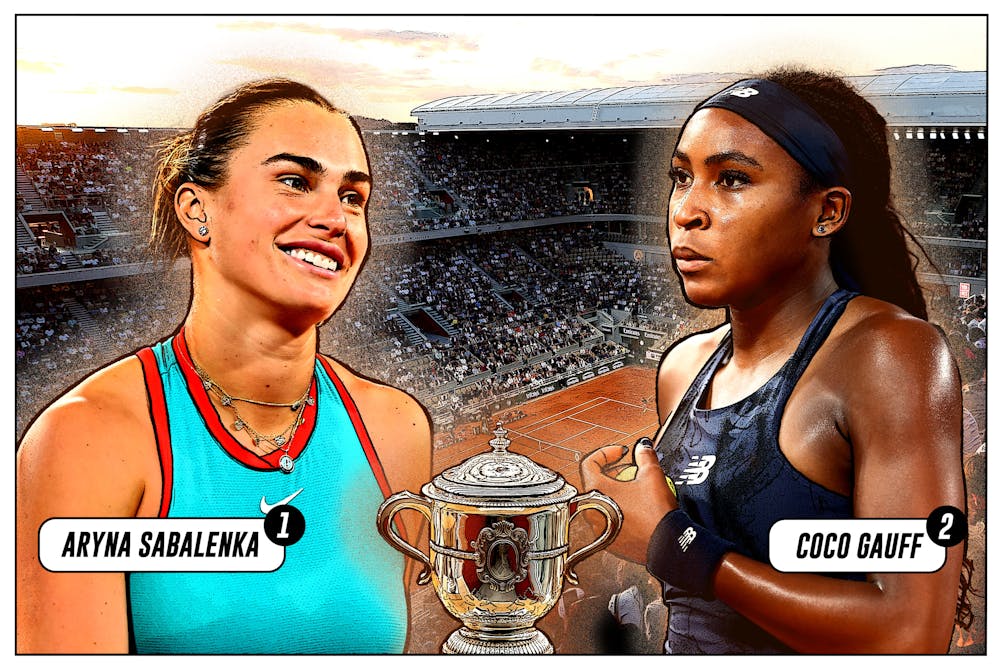In a fortnight of startling success (Lois Boisson being the standout star on that front), remarkable upsets (Boisson being the cause of several of them) and the usual mayhem that is part and parcel of every Grand Slam, we have arrived at an oasis of tranquillity.
Final preview: Sabalenka vs Gauff
The No.1 seed meets the No.2 seed - and there is precious little to separate the two

For once, the form book has done us proud: the top two players in the world will do battle for the Coupe Suzanne Lenglen. And that very rarely happens. The final itself will be anything but tranquil but the right people, according to the seedings, have booked their place in it.
Trying to separate Aryna Sabalenka and Coco Gauff is not easy. They have played 10 times and each won five times. They have played in two finals and won one each (Sabalenkla won the Madrid final last month and Gauff won the US Open final in 2023).
They are both power hitters, although Sabalenka hits harder than Gauff. They both know how to move on the clay, although Gauff is the better athlete. They can both handle pressure: Gauff was anointed as the new saviour of American women’s tennis when she was just 14. Sabalenka wears the mantle of the No.1 ranking with a relaxed ease – she absolutely loves it. They have both won Grand Slam finals and lost them (Sabalenka has won three and lost two, Gauff has won one and lost one). And they are both fighters.
Faurel: Gauff is going to be something special
Dubrov: Sabalenka’s job far from over
Basically, there is barely a gnat’s whisker between them. It is only when scrolling through the minutiae of the stats that a little clear water opens up between the finalists.
Over the course of the past six rounds, Sabalenka has thumped down 28 aces and 12 double faults; her fastest serve clocked 122.4mph (197kph) and she has been broken 12 times. Gauff, on the other hand, has served six aces and 33 double faults, her fastest serve was 121.2mph (195kph) and she has been broken 18 times.
In other words, in order to claim Sabalenka’s serve, you have to break her. If Gauff is not at her very best, she can leak free points with those double faults and give a break of serve away. It is not much to work on but in major finals, even a fraction of a percentage point can be the difference between winning and losing.
There is also the small matter of consistency: this is Sabalenka’s second Grand Slam final of the year. This is Gauff’s third Grand Slam final in three years. And that explains the gap of nearly 4,000 ranking points between them.
What it all comes down to is that if Sabalenka and Gauff both play at the very peak of their abilities, we are in for a final to remember.
 ROLAND-GARROS
19 May - 8 June 2025
ROLAND-GARROS
19 May - 8 June 2025

